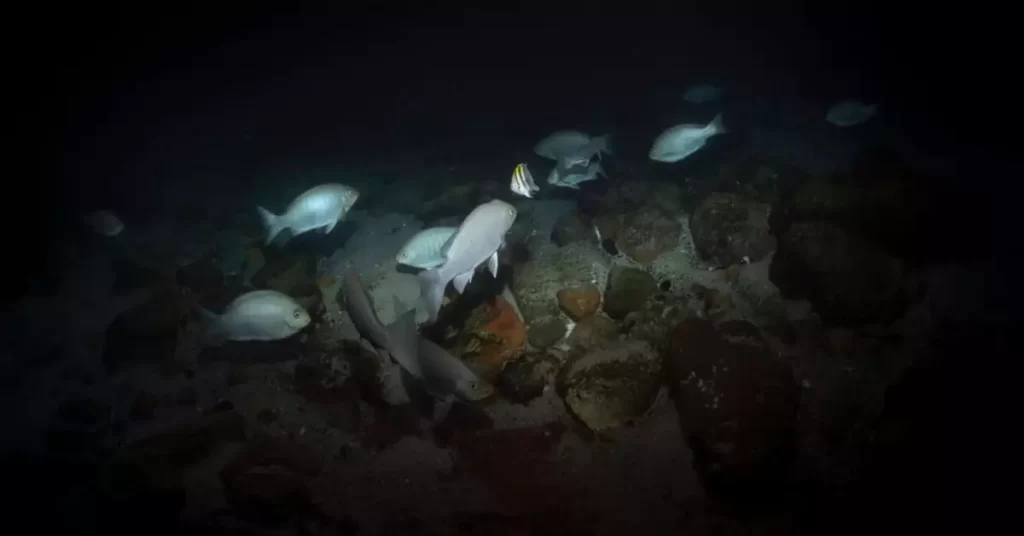Fishing is a popular recreational activity enjoyed by millions of people worldwide. Washington State offers a diverse range of fishing opportunities, from saltwater to freshwater, and from rivers to lakes. But what about nighttime fishing?
In this article, we will discuss whether you can fish at night in Washington, the rules and regulations you need to be aware of, and some tips for a successful night fishing experience.
Night Fishing in Washington: An Overview
Yes, you can fish at night in Washington State. However, it is essential to know the specific rules and regulations that govern night fishing to ensure a safe and legal experience.
Night fishing can be an exciting and rewarding way to catch a variety of species that become more active during nighttime hours.
Rules and Regulations for Night Fishing
While night fishing is allowed in Washington, there are some rules and regulations you must follow.
These rules may vary depending on the location, type of water body, and targeted species. It is essential to consult the Washington Department of Fish and Wildlife (WDFW) regulations for the most up-to-date information.
Night Fishing Licenses and Permits
To fish at night in Washington, you need to have a valid Washington fishing license. Licenses can be purchased online, at a licensed vendor, or at a WDFW office.
Depending on the area and species you intend to target, additional permits may be required, such as a catch record card for certain species like salmon or steelhead.
Species to Target During Night Fishing
Night fishing in Washington can be an excellent opportunity to catch various species that are more active or easier to target during nighttime hours.
Some popular species for night fishing include catfish, walleye, bass, crappie, and certain trout species. Each species may require specific tactics and techniques to increase your chances of success.
Best Locations for Night Fishing in Washington
Washington State offers numerous locations suitable for night fishing, ranging from rivers and lakes to saltwater bays and estuaries.
Some popular night fishing spots include the Columbia River, the Yakima River, Banks Lake, and the Puget Sound. It’s crucial to research and choose the right location based on the species you want to target and the time of year.

Safety Tips for Night Fishing
Night fishing can be a fun and rewarding experience, but it also comes with additional safety concerns.
Some key safety tips for night fishing include using proper lighting, wearing a life jacket, informing others of your plans, and staying aware of your surroundings.
Night Fishing Gear and Equipment
To ensure a successful and enjoyable night fishing experience, it’s essential to have the right gear and equipment.
Some essential night fishing items include a headlamp or flashlight, reflective clothing, appropriate bait and tackle, and navigation tools such as a GPS or a map and compass. Investing in quality gear can greatly enhance your night fishing experience and help ensure your safety on the water.
Techniques for Successful Night Fishing
Night fishing requires some adjustments to your usual fishing techniques to increase your chances of success. Here are a few tips to help you catch more fish at night:
- Use darker lures and baits: Dark-colored lures and baits are more visible to fish in low-light conditions, making them more likely to attract a bite.
- Fish near light sources: Many fish species are attracted to areas with artificial light, such as docks or piers with lights or underwater lighting. These areas can be productive for night fishing.
- Slow down your presentation: Fish are often less aggressive at night, so slowing down your lure or bait presentation can make it more enticing to your target species.
- Listen for signs of fish activity: At night, your other senses become more important. Listen for splashing, jumping, or other signs of fish activity to help locate productive fishing spots.
- Use your sense of touch: Since visibility is reduced at night, rely on your sense of touch to detect subtle bites or changes in your line tension.
Preserving the Environment and Practicing Catch and Release
While night fishing can be a thrilling adventure, it’s essential to remember the importance of preserving the environment and practicing catch and release when appropriate.
Following proper catch and release techniques, such as using barbless hooks and handling fish with wet hands, can help ensure the long-term health and sustainability of Washington’s fish populations.
FAQs
Do I need a separate fishing license for night fishing in Washington?
No, a regular Washington fishing license covers night fishing as well. However, you may need additional permits or catch record cards depending on the species you’re targeting and the area you’re fishing in.
What are the best times of the year for night fishing in Washington?
Night fishing can be productive throughout the year, but some seasons offer better opportunities for specific species.
For example, spring and summer are excellent for bass and crappie, while fall and winter can be good for walleye and some trout species.
Is it legal to use live bait for night fishing in Washington?
The use of live bait for night fishing is allowed in Washington, but it’s essential to follow the specific regulations for the area and species you’re targeting.
Some areas may have restrictions on the use of live bait, so be sure to consult the WDFW regulations before heading out.
Conclusion
Fishing at night in Washington can be an exhilarating and productive way to enjoy the state’s diverse aquatic habitats.
With proper planning, knowledge of the rules and regulations, and the right gear and techniques, you can experience the thrill of night fishing while helping to preserve the environment and ensure the future of Washington’s fish populations.
So, grab your gear, follow the guidelines, and embark on your nighttime angling adventure.